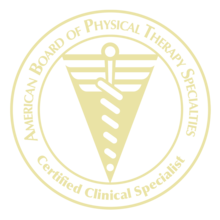
Are you having difficulty with your form when squatting? Having difficulty generating power in a deep squat? We have the answers for you. Lets start with the basics and an example:
What muscles are the glute muscles?The three gluteal muscles (gluteus maximus, gluteus medius and gluteus minimus) are powerful abductors, extensors, and rotators of the thigh. The gluteus maximus is one of the largest muscles in the human body and it functions as the chief extensor along with lateral rotation of the thigh. The gluteus medius has two functions, it is a powerful abductor to the thigh and it also medially rotates the thigh. The gluteus minimus is the smallest of the three gluteal muscles and it follows the same fiber pattern as the glute medius, therefore, having the same functions of the glute medius. One should keep in mind the functions of these powerful muscles when correcting gluteal imbalances through training.
Why are my glutes weak?Any elite athlete can tell you of at least one muscular deficiency they have. Whether it is from an injury, result of poor technique, ineffective training regimen, or predisposed from everyday activities, it is human nature to develop muscular imbalances. A common example is when an athlete gets injured; let’s say the hip for example, the musculature surrounding the hip joint will become inactive due to the sustained injury. If vigorous activity persists this can lead to a decrease in recruitment of the nerves that innervate at the injury site and the human body will now have to utilize other muscle groups in order to complete the desired task. Therefore, a deficiency will begin to develop.
My example of a hip injury causing weak glute muscles
Based on my experience as a competitive weightlifter I have dealt with this issue before. While performing heavy snatches I suffered an injury to my hip. I chose to have hip arthroscopic surgery to remove the frayed cartilage from my acetabulum. In response to the injury sustained I began to develop a muscular deficiency in my hip and thigh muscles. This injury predisposed me to a muscular imbalance, where as in some cases, the muscular imbalance can predispose one to an injury. Doing the following exercises helped me regain unilateral balance and correct my deficiency following surgery.
Here are a few good exercises to incorporate into a warm up before squatting are as follows:
Monster walks with band- 3-4 sets of 10-15 yards
Single leg circles with band- 3-4 sets of 10 repetitions
Single leg RDL’s- 3-4 sets of 10 repetitions
Single leg Squat- 3-4 sets 10 repetitions
After regaining proper mobility and glut muscle activation, below is a video with proper squatting form and correct technique. You can slowly progress strength and increase power once proper form is reached and really focus on exploding out of the deep squat position while maintaining your proper form.
If you are struggling with deep squatting and have difficulty get generating power out of your squat, call now and schedule your evaluation for a Pre-Injury Screening for Athletes and those who train CrossFit! About the guest author:
About the guest author:








